
GN Separation has recently organized the delivery of a sludge dewatering screw press package to a client in South America. This system is specifically designed for sludge thickening and dewatering in wastewater treatment processes, aiming to boost the client's sludge management efficiency and overall operational performance.
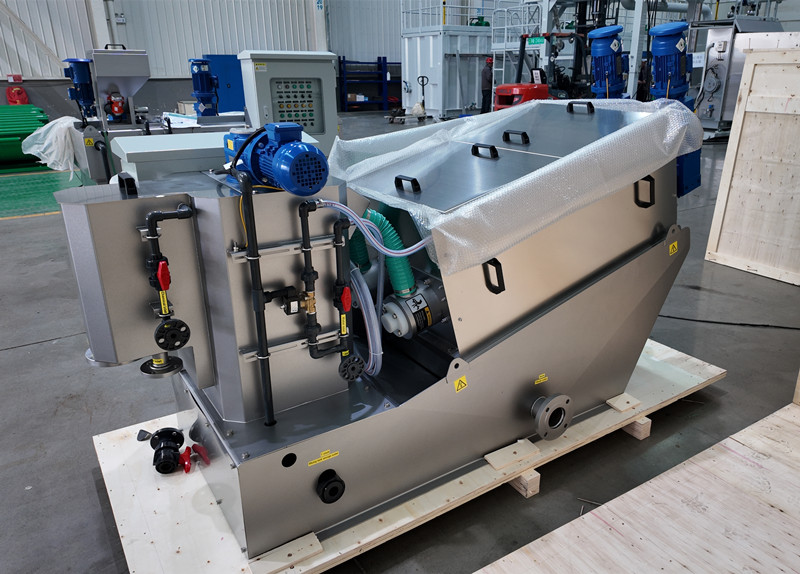
The package primarily comprises a GN Screw Press GNDL202 and a Chemical Dosing Unit GNZJY1000, creating a unified sludge dewatering solution. In response to the project's needs, GN Separation took charge of system-level design, equipment production, and factory inspection before shipping. This highlights the company's ability to provide complete sludge dewatering systems, not just standalone pieces of equipment.
The GN screw press sludge dewatering machine is recognized as a cost-effective and eco-friendly option for sludge dewatering, commonly used in both municipal and industrial wastewater treatment projects. It works on the principle of screw extrusion dewatering. As the sludge is pushed forward by the screw shaft, the increasing internal pressure generated by the changing screw diameter and pitch, along with the narrow gaps between the fixed and floating rings, enables continuous solid-liquid separation at a relatively low rotational speed.
When compared to traditional high-speed dewatering equipment, screw press technology is often preferred for applications that prioritize stable operation, lower noise levels, and easier maintenance. Its design allows for seamless sludge thickening and dewatering in a continuous process, making it ideal for long-term operation under varying sludge conditions.
The GNDL202 screw press provided for this project combines sludge thickening and dewatering functions in a compact design. Its enclosed structure helps contain odors and maintains a cleaner working environment. The equipment can be configured to suit different sludge characteristics, enabling operators to fine-tune performance during actual use.
To ensure effective flocculation, the system includes the GNZJY1000 chemical dosing unit, responsible for polymer preparation, aging, and dosing. Flocculation is crucial in sludge dewatering as it affects separation efficiency and the properties of the dewatered cake. The dosing unit is engineered to deliver a consistent polymer concentration and dosing rate, enhancing process control and operational flexibility.
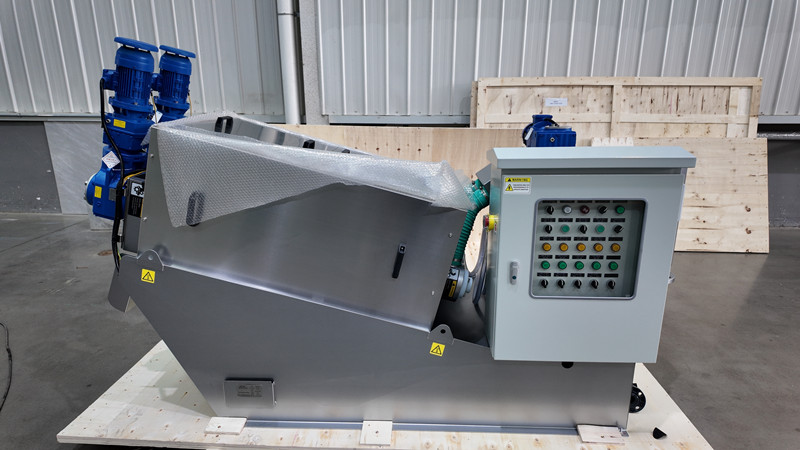
From a system standpoint, the GN dewatering screw press package encompasses a fully automatic control cabinet, a flocculation modulation unit, a sludge thickening and dewatering module, and a filtrate collection tank. With automatic control technology, the system can manage flocculation, sludge thickening, and extrusion dewatering in a continuous and coordinated manner. The separated filtrate can be collected and either returned to the treatment system or discharged based on site-specific requirements.
This project showcases GN Separation's extensive expertise in designing and manufacturing sludge dewatering systems. By integrating mechanical equipment, control systems, and process considerations, GN strives to offer practical and dependable solutions tailored to customer needs. Before dispatch, the system underwent a factory inspection to confirm equipment condition and system integration.
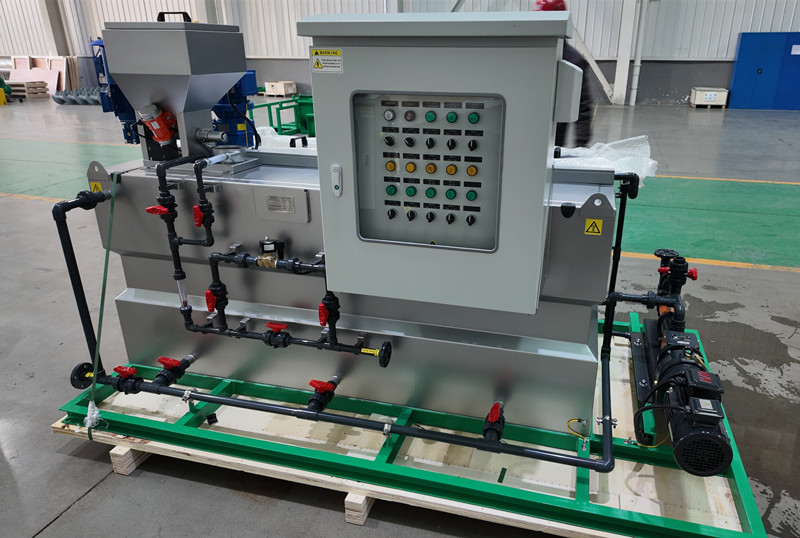
The shipment to South America underscores GN Separation's expanding presence in international markets, where the demand for efficient sludge treatment solutions is on the rise. Such systems find applications in municipal wastewater treatment plants, food and beverage processing, and other industrial sectors that produce biological or mixed sludge.
Looking to the future, GN Separation will continue to emphasize system integration, product refinement, and technical support for its global clientele. Through close cooperation with customers and partners, GN aims to further enhance its sludge dewatering solutions to cater to a wide range of project requirements across different regions.
- Details
-
Published: 25 December 2025
As the global mining industry continues to expand, iron ore processing plants are under mounting pressure to enhance throughput, improve screening efficiency, and extend the lifespan of their equipment. In response to these challenges, banana vibrating screens have emerged as a top choice for iron ore classification, thanks to their high processing capacity, multi-angle screening design, and superior separation performance.
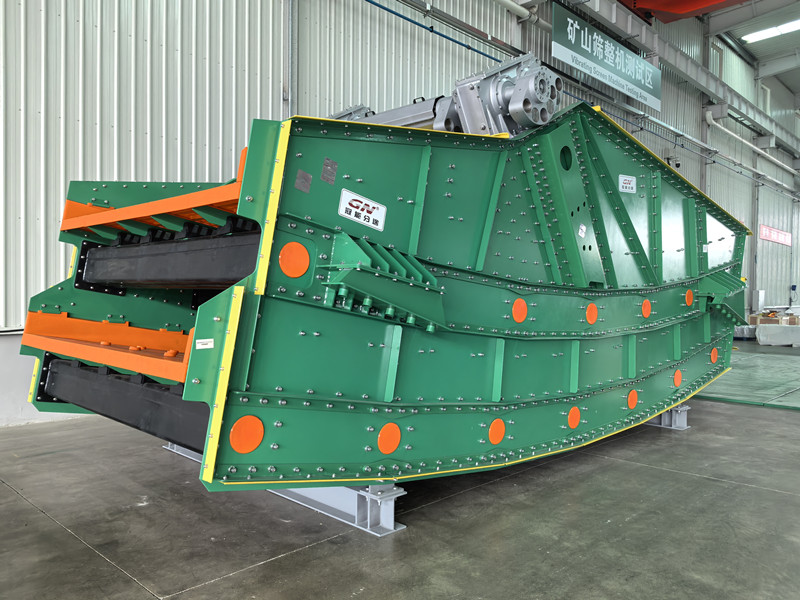
GN Separation has recently finished manufacturing a Double-Layer Banana Vibrating Screen (Model GNBD3073) tailored for an iron ore classification project. The equipment is now ready for shipment and on-site installation, a testament to GN's engineering prowess in heavy-duty screening applications.
The GNBD3073 banana screen is purpose-built to withstand the harsh conditions of mining operations, including high impact loads, abrasive materials, and continuous use. Its side wallboards feature a non-welded structure, crafted from high-strength alloy steel plates renowned for their exceptional impact toughness. Instead of traditional welding, imported Huck rivets are used for hydraulic tension assembly, effectively eliminating welding residual stress and significantly boosting structural reliability and fatigue resistance.
To ensure stable operation and a prolonged service life, GN engineers employed finite element analysis (FEA) to fine-tune both the structural design and vibration parameters. This meticulous approach enables the screen to steer clear of natural frequencies at all operational levels, minimizing the risk of resonance and reducing vibration-induced damage, thereby extending the equipment's overall lifespan.
The cross beams beneath the screen deck are designed with rectangular tubes, providing a robust and stable support framework. The excitation beam box, on the other hand, boasts a lightweight design without compromising on strength or toughness. Key welded components undergo post-welding heat treatment to relieve stress and enhance long-term operational stability.
For enhanced wear and corrosion resistance, the beam surfaces are coated with polyurea using spray equipment imported from the United States. Additionally, rubber protective components are strategically placed in areas prone to strong impact and abrasion. These measures collectively bolster the screen's resistance to erosion and wear, ensuring reliable performance in demanding iron ore screening scenarios.
The GNBD3073 is powered by a high-efficiency helical gear box-type exciter, which generates a super-large excitation force while maintaining ultra-low noise levels and stable operation. The exciter is engineered for longevity and reduced maintenance needs. Its eccentric blocks are positioned outside the exciter box, enabling operators to effortlessly adjust the vibration amplitude by modifying the counterweight configuration to suit different materials and process conditions.
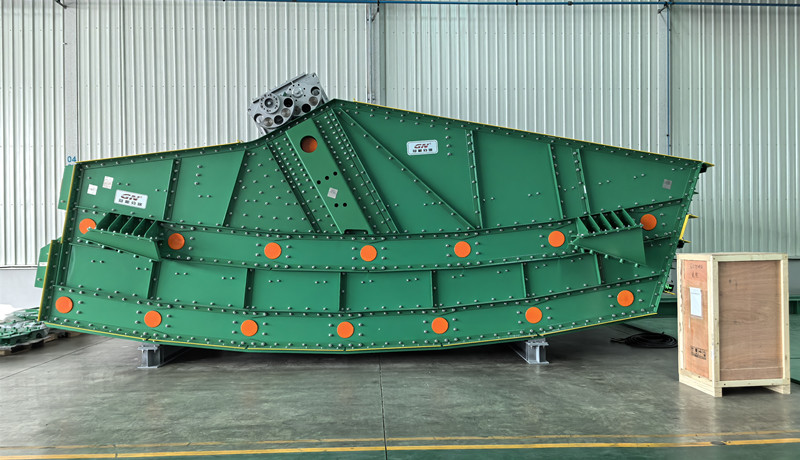
To cater to a wide range of customer needs, GN banana vibrating screens are offered as a series of products adaptable to various production capacities and process flows. The screen utilizes modular polyurethane screen panels, which excel in wear resistance, versatility, and quick replacement. This modular design drastically cuts down on downtime and lowers overall operating and maintenance costs for customers.
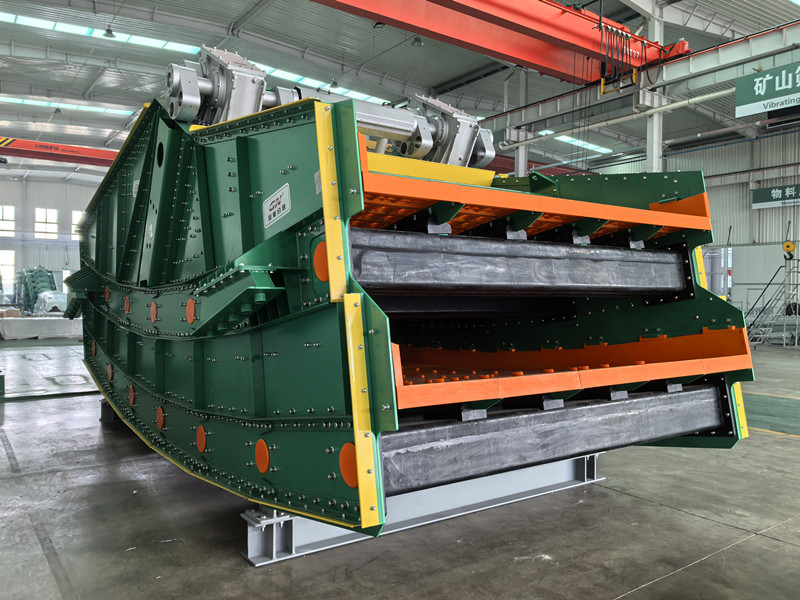
With this successful application in iron ore processing, GN Separation reaffirms its dedication to delivering high-efficiency, reliable, and cost-effective screening solutions to the global mining industry. GN remains committed to technological innovation and product optimization, continuously striving to provide advanced vibrating screening equipment that empowers customers worldwide to achieve efficient and sustainable mineral processing operations.
- Details
-
Published: 21 December 2025
GN Separation recently supplied its high-performance Trash Screen system to an iron ore beneficiation project. This system is employed to eliminate impurities prior to the flotation stage. In contemporary mineral processing, maintaining the cleanliness and stability of the feed for flotation is crucial for achieving higher-grade concentrates and ensuring seamless plant operations. The GN Trash Screen is specifically engineered for this purpose, offering dependable separation of unwanted debris from valuable ore and aiding operators in maintaining process efficiency.
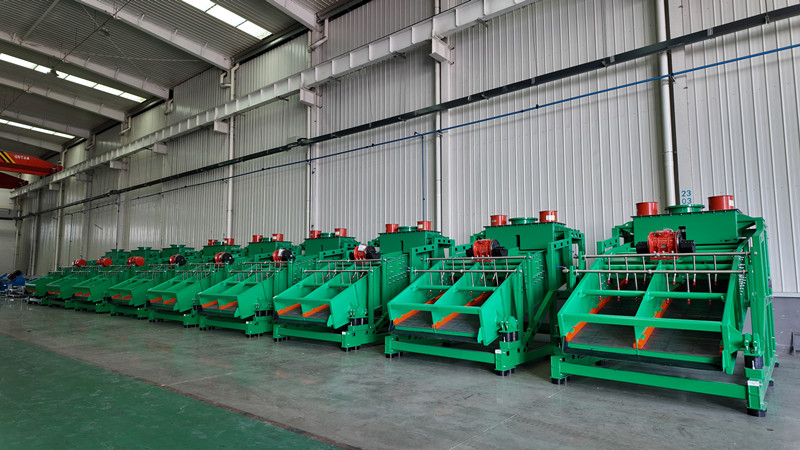
During the mining and transportation of iron ore, a variety of impurities inevitably infiltrate the raw material stream. These include plant roots, bark, twigs, plastic fragments, remnants of blasting fuses, and other foreign materials that can disrupt flotation performance. If these impurities are not removed beforehand, they may cause blockages within flotation cells, diminish aeration efficiency, disrupt reagent distribution, and ultimately result in inconsistent recovery rates. In extreme cases, they may necessitate shutdowns for cleaning, leading to production losses. The GN Trash Screen is designed to avert these problems by executing an efficient pre-screening step that safeguards the flotation circuit.
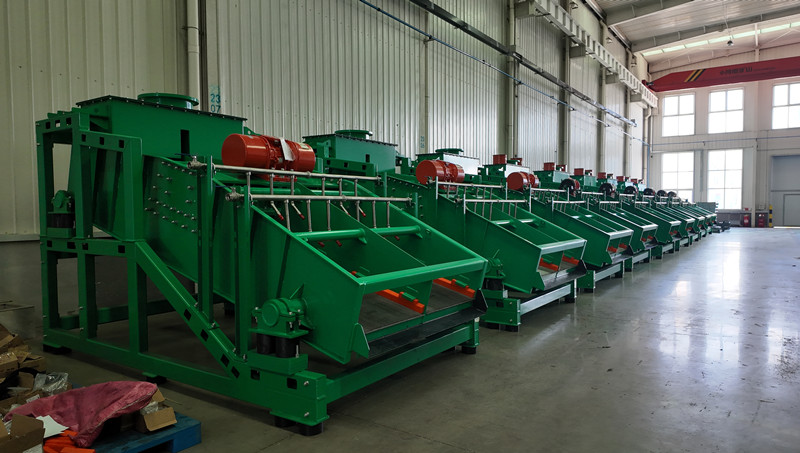
The GN Trash Screen features a robust vibratory mechanism that produces high-frequency screening motion, facilitating rapid material stratification and effective impurity separation. When combined with specially designed screen panels, the equipment ensures precise classification and consistent screening accuracy. These screen panels are constructed from wear-resistant materials suitable for handling abrasive iron ore slurry, offering extended service life and reduced maintenance needs. Even under heavy loads, the screen maintains stable throughput and delivers excellent dewatering and separation performance.
Another benefit of the GN Trash Screen is its straightforward design and user-friendly operation. The machine is engineered for easy integration into existing beneficiation lines, and its open layout provides convenient access for inspection and routine maintenance. This enhances overall plant reliability and helps operators minimize unplanned downtime. By removing oversized contaminants early in the process flow, the Trash Screen not only protects flotation equipment but also enhances downstream process stability and reduces the likelihood of operational disruptions.
With cleaner feed entering the flotation circuit, the quality of the final iron concentrate can be substantially improved. Stable flotation conditions result in more efficient reagent usage, enhanced recovery rates, and more consistent product quality. For plants seeking to optimize production efficiency, reduce operating costs, and maintain high output stability, GN’s impurity-removal solution offers a significant performance advantage.
GN Separation remains dedicated to advancing screening and solid-liquid separation technologies tailored to the mining and mineral processing sector. The successful implementation of the GN Trash Screen in iron ore flotation preparation underscores its commitment to delivering reliable, high-quality equipment that meets the rigorous demands of global beneficiation operations.
- Details
-
Published: 12 December 2025
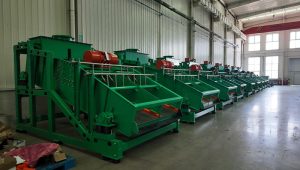
In iron ore beneficiation, maintaining clean and stable feed quality is essential for achieving high flotation efficiency and stable plant performance. Before ore enters the flotation stage, impurities such as grass roots, bark, plastic fragments, and even explosive fuse remnants can severely affect downstream operations. These contaminants not only reduce flotation efficiency but also lead to equipment blockage, downtime, and increased maintenance costs.
To address these issues, GN Separation offers the GN Trash Screen (Model: GNGZ1840A), a purpose-built solution designed to safeguard the purity of raw ore materials before flotation.
Efficient Impurity Removal for Iron Ore Processing
The GNGZ1840A Trash Screen is engineered specifically for impurity removal in iron ore preparation plants. It combines powerful vibration with a durable, purpose-designed screen deck to effectively separate unwanted materials from the ore stream.
Key Benefits:
1. Reliable Separation of Undesirable Materials
The screen efficiently removes light and fibrous contaminants such as:
-
Grass roots
-
Bark and wood pieces
-
Plastic or foreign soft materials
-
Explosive fuse fragments
These impurities often originate from mining, blasting, and transportation. Removing them at the earliest stage protects the downstream process.
2. Improved Flotation Concentrate Quality
By maintaining a cleaner feed, the flotation process becomes more stable and selective. Cleaner ore slurry directly contributes to:
-
Higher iron grade
-
Reduced reagent consumption
-
Lower risk of interference in flotation cells
3. Reduced Equipment Downtime
Trash materials can easily cause pump blockages, pipeline choking, and screen blinding. The GN Trash Screen helps operators significantly reduce:
-
Unplanned shutdowns
-
Maintenance frequency
-
Wear on downstream equipment
This results in lower operating costs and higher overall plant availability.
Robust Structure and Reliable Performance
The GNGZ1840A Trash Screen features:
-
Strong vibration force for efficient stratification
-
Reinforced screen box suitable for heavy-duty mining applications
-
Customized screen panels designed to balance strength, permeability, and wear resistance
-
Stable operation even under fluctuating feed conditions
Every component is engineered to withstand harsh mining environments, ensuring long service life and consistent performance.

GN Separation – Complete Solutions for Mining and Mineral Processing
GN Separation provides a comprehensive range of solid–liquid separation and classification equipment for the mining industry. Beyond the Trash Screen, GN offers a wide portfolio of mineral processing solutions, including:
1. Mining Vibrating Screens
GN manufactures several types of vibrating screens for classification, dewatering, and desliming applications:
-
High-frequency vibrating screens
-
Large flip-flow vibrating screens
-
Synergistic frequency vibrating screens
-
High shear circular screens
These screens are designed to handle fine materials, high-moisture feeds, and demanding capacity requirements.
2. Tailing Management Solutions
GN provides decanter centrifuges specifically developed for:
-
Tailing dewatering
-
Recovery of valuable solids
-
Sludge volume reduction
The machines feature rugged construction, wear-resistant materials, and automation options for stable tailing treatment.
3. Material Transfer Equipment
To support mining plant logistics, GN also offers:
-
U-Type screw conveyors
-
Progressive cavity pumps (single screw pumps)
-
Vacuum pumps for solids and slurry transport
These systems streamline material handling and ensure smooth operations across processing lines.
Conclusion
The GN GNGZ1840A Trash Screen is a crucial piece of equipment for iron ore beneficiation plants, protecting flotation processes from contaminants and ensuring high-quality concentrate production. Its strong separation capacity, durable design, and consistent performance make it an essential tool for maintaining operational efficiency.
Combined with GN’s extensive range of mining-class screening, dewatering, and conveying equipment, GN Separation continues to deliver reliable, industry-proven solutions for mineral processing plants worldwide.
If you would like, I can also prepare:
-
A shorter marketing version
-
A Chinese version
-
A website landing page rewrite
-
A brochure-style description
Just let me know!
- Details
-
Published: 09 December 2025
GN Separation is thrilled to announce the recent shipment of seven decanter centrifuges to a customer in the chemical processing sector, which specializes in chemical salt production. These centrifuges are set to play a crucial role in the continuous dewatering of various inorganic chemical salts, a process that hinges on high-efficiency solid-liquid separation and unwavering reliability.
The production of chemical salts generally encompasses crystallization, washing, and separation stages. The performance of the dewatering equipment during these steps has a direct bearing on product purity, production efficiency, and the overall stability of the plant. GN's decanter centrifuge solutions have been meticulously designed to thrive under these exacting conditions.
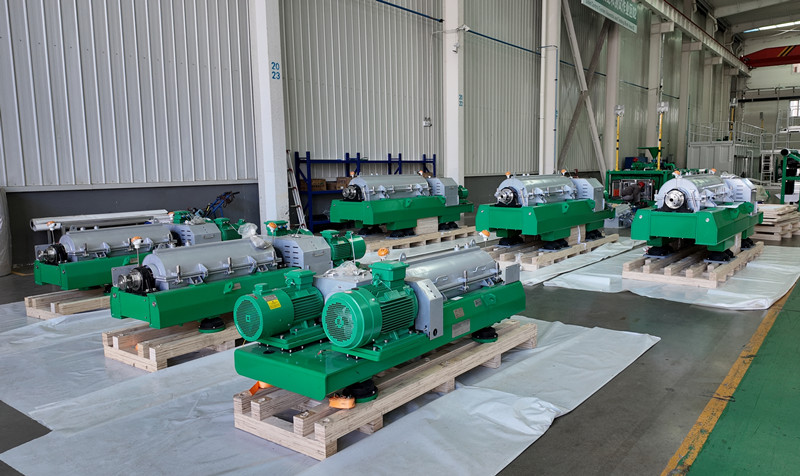
Unique Challenges in Chemical Salt Dewatering
Dewatering chemical salts presents distinct challenges for centrifuges due to the nature of the materials. Salts like sodium chloride, potassium chloride, sodium sulfate, and ammonium salts are characterized by high density, sharp crystal edges, and corrosive chemical properties. These factors necessitate centrifuges that can endure high levels of abrasion, resist corrosion from chloride-rich brine, and maintain stable operation under high G-forces.
To address these challenges, GN's chemical decanter centrifuges are constructed using duplex stainless steel or equivalent anti-corrosion materials for all key components that come into contact with the process fluid. Additionally, critical wear surfaces are fortified with tungsten carbide, ensuring long-term durability. This robust construction enables the equipment to operate continuously with minimal maintenance, a vital requirement for chemical plants that operate 24/7.

High-Performance Separation Capabilities
During the dewatering process, the centrifuge must efficiently separate a substantial volume of crystal slurry while keeping the moisture content of the discharged solids as low as possible. Achieving the appropriate level of dryness not only enhances product quality but also significantly cuts down on the energy consumption of downstream drying systems.
GN decanter centrifuges are equipped with high rotational speeds and optimized bowl designs to generate powerful centrifugal forces, facilitating rapid separation of crystals from the mother liquor. The stable and precisely controlled differential speed of the screw conveyor further improves cake dryness. Operators can also fine-tune the performance based on variations in feed concentration or crystal size, ensuring consistent product quality even when production conditions fluctuate. This improved separation efficiency also leads to higher production throughput, enabling chemical plants to operate more efficiently and reduce operational costs.
Advanced Control System for Enhanced Functionality
The functionality of the centrifuges is further amplified when paired with GN's cutting-edge control system. For the seven units delivered to the customer, GN has integrated intelligent control technology that allows for real-time adjustments of bowl speed, differential speed, torque load, and feed rate. This level of automation is of paramount importance in chemical salt operations, where changes in slurry density, crystal load, or temperature can impact equipment efficiency.
The control system continuously monitors vibration, temperature, and other operating parameters, enhancing operational safety and preventing potential failures. This ensures long-term stable operation, minimizing downtime and maintenance costs.
GN's Commitment to the Chemical Industry
The delivery of these seven decanter centrifuges underscores GN's unwavering commitment to providing the chemical industry with top-notch solid-liquid separation technologies. With extensive experience in sectors such as oil and gas, mining, industrial wastewater treatment, and environmental engineering, this project further solidifies GN's position in the chemical salt processing arena.
As the demand for high-purity salt continues to rise and there is a growing emphasis on production efficiency and reliability, GN is dedicated to expanding its technical capabilities. The company will continue to supply advanced centrifuge solutions tailored to the specific needs of chemical manufacturers worldwide.
GN Solids Control eagerly anticipates the opportunity to support more customers with efficient, reliable, and durable decanter centrifuge systems for chemical salt dewatering and a wide range of other industrial separation applications.
- Details
-
Published: 07 December 2025
We are excited to share the news that four GNLW554-VFD dewatering centrifuges are fully prepared and ready to be dispatched to an overseas sewage treatment plant on 28 November 2025. These centrifuges are specifically designed to facilitate sludge separation and enhance the overall efficiency of wastewater treatment operations at the plant. They offer versatile solutions to handle various sludge conditions effectively.
Advanced Features for Optimal Performance
The GNLW554-VFD dewatering centrifuge comes with a variable frequency drive (VFD) system. This innovative feature enables precise and flexible control over the bowl speed, allowing the centrifuge to adapt seamlessly to different sludge characteristics and specific operational needs. The centrifuge drum is constructed from duplex stainless steel, which significantly enhances its strength and provides excellent resistance to corrosion, ensuring long-lasting performance even in harsh environments.
Moreover, the slag discharge ports are equipped with tungsten carbide wear-resistant liners. These liners are highly effective in managing abrasive sludge, reducing wear and tear on key components, and extending the service life of the centrifuge.
Optional Remote Monitoring for Enhanced Efficiency
To further improve operational efficiency, optional remote monitoring interfaces are available for these centrifuges. These interfaces enable seamless integration with the plant's existing automation system. Operators can monitor real-time performance data, make necessary adjustments to operational parameters promptly, and plan maintenance activities in a more organized and convenient manner. This feature also facilitates smoother coordination with other equipment involved in the wastewater treatment process, leading to overall improved plant performance.
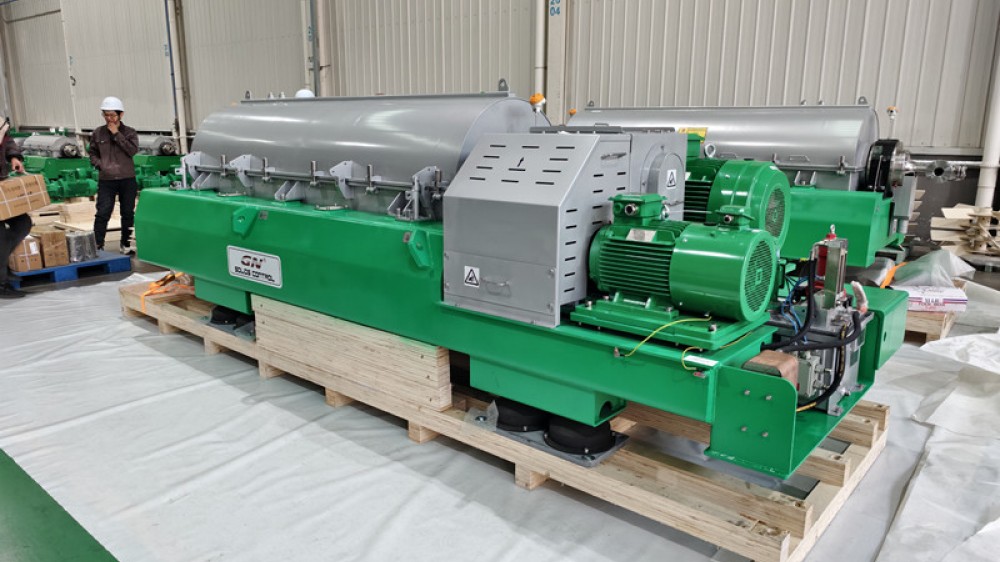
Versatile Application for Different Sludge Types
The centrifuges are engineered to handle a wide variety of sludge types, including both municipal sewage sludge and industrial wastewater sludge. With their substantial throughput capacity, they play a crucial role in reducing sludge volume and supporting downstream treatment processes. The VFD control system allows for a gradual start-up and shutdown process, which contributes to operational stability and minimizes mechanical stress on the equipment, thereby reducing the risk of breakdowns and maintenance costs.
Compact and Modular Design for Easy Installation
Featuring a compact and modular structure, these centrifuges can be installed in various layouts, making them suitable for both new and existing treatment facilities. Our dedicated engineering team has worked closely with the client to tailor the centrifuges to meet project-specific requirements. This includes customizing the structural design, adjusting operational parameters, and incorporating optional remote monitoring capabilities to ensure optimal performance and integration with the plant's existing systems.
Stringent Quality Control for Reliable Performance
All four centrifuges have undergone rigorous manufacturing and inspection processes in accordance with established quality standards. Throughout the production phase, meticulous attention has been paid to every detail to ensure the highest level of quality and reliability. As the units are now ready for shipment, this project underscores our ongoing commitment to providing dependable and adaptable equipment for diverse international wastewater treatment applications.
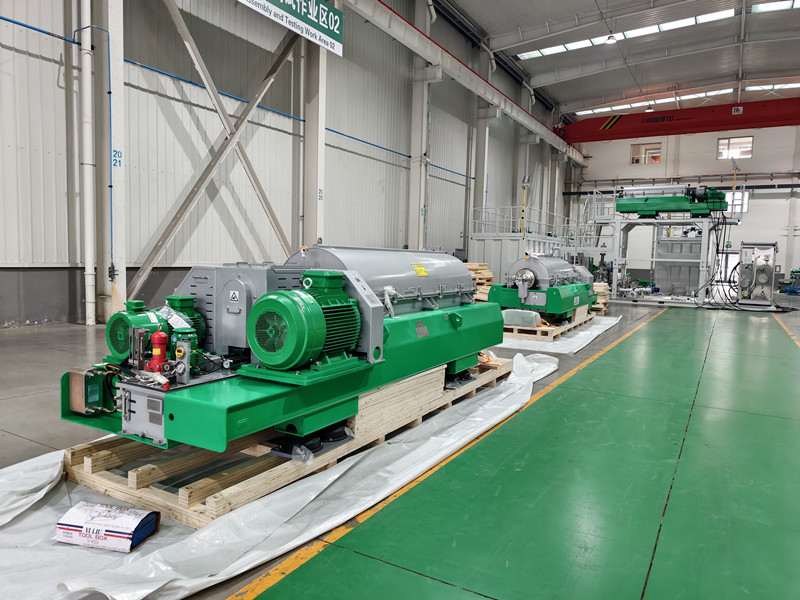
Expected Impact on the Sewage Treatment Plant
The four GNLW554-VFD dewatering centrifuges are anticipated to significantly enhance the plant's ability to handle sludge efficiently. They will help maintain consistent operations, reduce sludge volume, and contribute to broader environmental and wastewater treatment objectives. This delivery further reinforces our unwavering commitment to supplying high-quality solutions that enable treatment facilities to achieve stable performance while meeting evolving operational and environmental requirements. We look forward to seeing the positive impact these centrifuges will have on the plant's operations and the environment.
- Details
-
Published: 30 November 2025